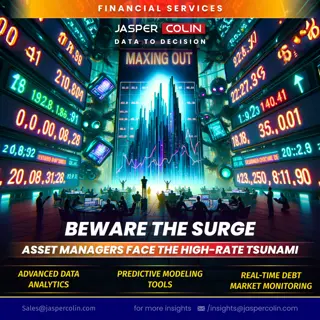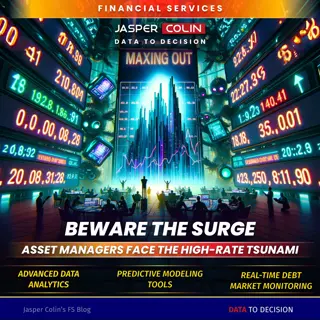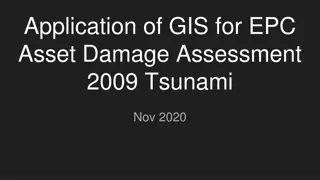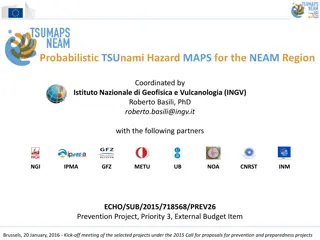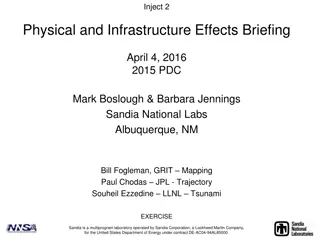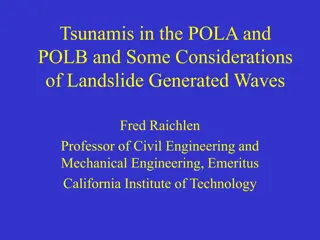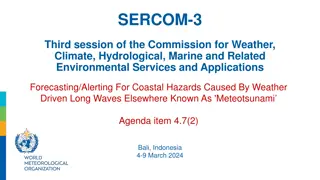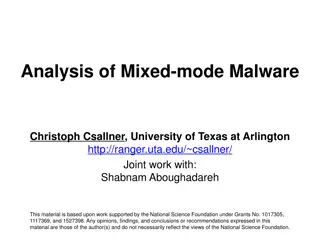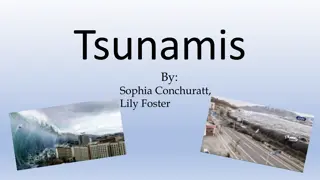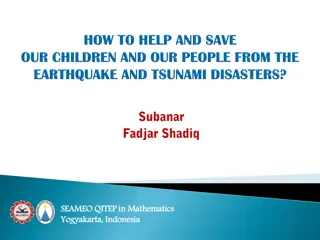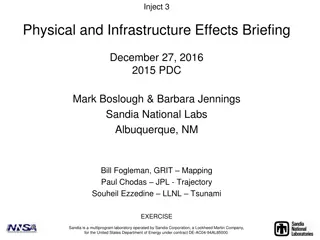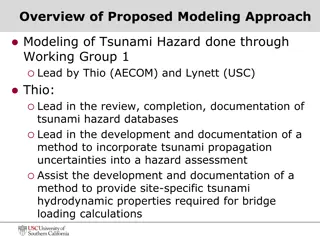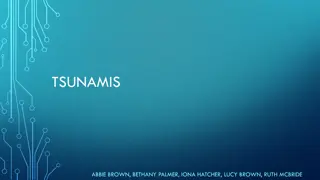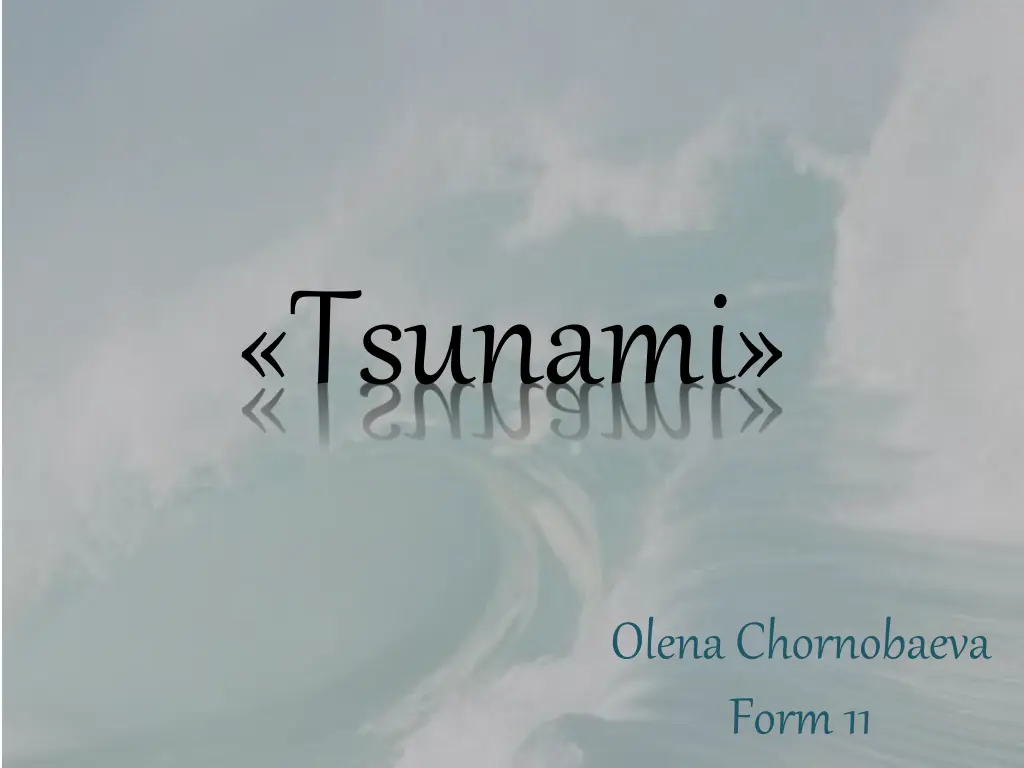
Understanding Tsunamis: Causes, Symptoms, and Safety Measures
Discover the powerful forces behind tsunamis, including underwater earthquakes, volcanic eruptions, and more. Learn about the symptoms of a looming tsunami and the importance of recognizing early warning signs to stay safe. Explore the potential dangers of unusual drift ice, reverse faults, and reef education crowding. Take a deeper look into the seismic activities that trigger tsunamis and how to respond to sudden water withdrawals from the coast. Stay informed and prepared to mitigate risks associated with these natural disasters.
Download Presentation

Please find below an Image/Link to download the presentation.
The content on the website is provided AS IS for your information and personal use only. It may not be sold, licensed, or shared on other websites without obtaining consent from the author. If you encounter any issues during the download, it is possible that the publisher has removed the file from their server.
You are allowed to download the files provided on this website for personal or commercial use, subject to the condition that they are used lawfully. All files are the property of their respective owners.
The content on the website is provided AS IS for your information and personal use only. It may not be sold, licensed, or shared on other websites without obtaining consent from the author.
E N D
Presentation Transcript
Tsunami OlenaChornobaeva Form 11
Tsunami -long waves generated by the powerful influence of the whole mass of water in the ocean or other body of water.
The reason most tsunamis are underwater earthquakes, during which there is an abrupt shift (raising or lowering) of the area of the seabed.
The tsunami generated by an earthquake of any force, but large forces reach those that arise due to strong earthquakes.
Earthquakes, volcanic eruptions and other underwater explosions, glaciers, meteorites and other damage above or below the water -all this has the potential to cause a tsunami.
Sudden rapid withdrawal of water from the coast for a considerable distance and drying bed. The farther the sea receded, the above can be a tsunami wave. People on the beach and do not know about the danger may remain out of curiosity or to collect fish and seashells. In this case, as soon as possible to leave the coast and away from it at the maximum distance.
Earthquake. The epicenter was located, as a rule, in the ocean. On the bank of the earthquake is usually much weaker, and it is often not at all.
Unusual drift ice and other floating objects, cracking in the fast ice.
Huge reverse faults at the edges of fast ice and reef education crowding and flow.

